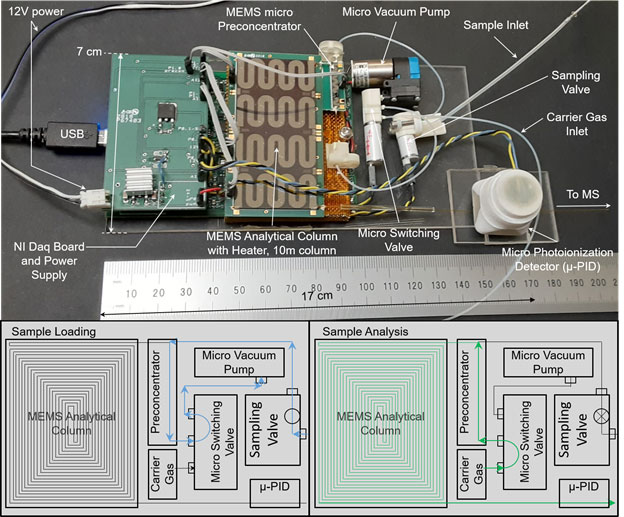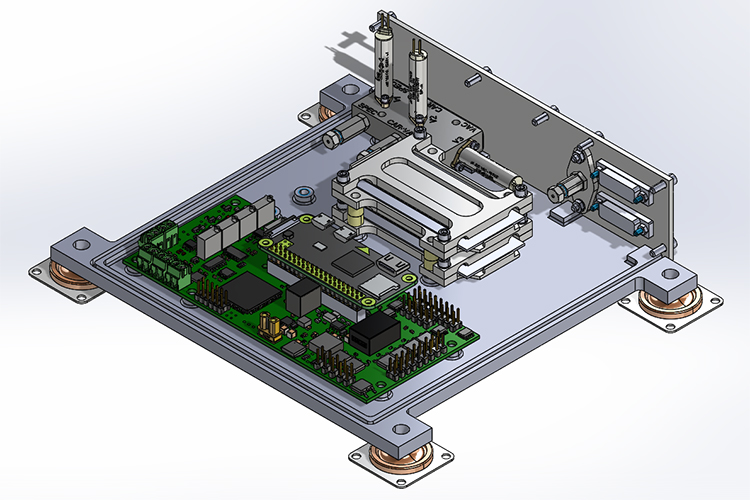Background
Gas chromatography (GC) is a widely used analytical technique that allows volatile and semi-volatile compounds in liquid, solid and/or gaseous samples to be separated and identified. With a successful history and ability to separate complex mixtures, GC became the likely choice for early space flight travel where the identification of organic compounds was critical to the science objectives of the mission. Recent advances in separation techniques have pushed GC to the next level of both resolution and detectability (Figure 1). These advances have made GC even more desirable for space missions that are targeting life detection through organic biosignature molecule detection.
SwRI is in the process of developing miniaturized high-resolution GC flight instruments (HRGC) that are robust enough to meet space flight requirements but also sensitive enough to perform high-resolution separations and trace-level identification of organic molecules on future flight opportunities to Icy Worlds, Outer Planets, and the Lunar Surface.

Figure 1: Schematic of a high-resolution gas chromatograph and representative high-resolution data.
Approach
Individual components of the GC are engineered and fabricated to reduce the size, power, and mass of the complete GC system. Micro Electrical Mechanical Systems (MEMS) technology is employed to help further reduce the overall system footprint while maintaining performance specs. The project is focused on; (1) hardware development from advanced technology, (2) integrated and embedded software to control the GC and also store collected data, and (3) methodology development for targeted biosignature molecules.

Figure 2: A prototype MEMS GC system with details on the sampling and analysis flow paths.
Accomplishments
Individual HRGC prototypes are in development that allow for system integration and analytical testing of MEMS devices. Software testing is done on in-house designed control boards and analytical methodology is being carried out for amino acids and other biosignature molecules.

Figure 3: Schematic of a MEMS High-Resolution GC for space flight applications. Multiple MEMS analytical columns are used to provide a broad spectrum of separation properties.
